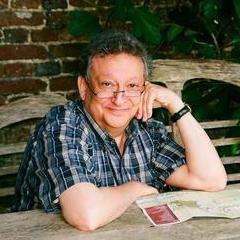The world can clearly use 80 minutes of uplifting and exuberant song and symphony from Mozart’s time, and that is precisely what opened the 2017 Mostly Mozart Festival at Lincoln Center. Titled “The Singing Heart,” the program celebrated the Enlightenment ideal of youth as the font of creative possibilities. Taking part was the Young People’s Chorus of New York City under the direction of Francisco J. Núñez; Louis Langrée, the Festival’s music director, conducted.
The idea was a good one, even if the notion was not entirely carried through. In fact, the program seemed more like an admirable hodge-podge, albeit filled with great music. The major orchestral work was Mozart’s Haffner Symphony no. 35 in D major, which Mr Langrée performed in separate movements, broken up by a selection of songs performed by the choir. Mr Núñez explained from the stage, playing symphonic movements apart from each other was a practice in Mozart’s day; here it was a bit off-putting and tended to dilute the effect of the whole work. There was also no denying that the magnificent work by the Chorus was a hard act to interrupt and follow. Beginning with Mozart’s reflective, gorgeous, three-minute Kyrie, written when he was just 16, the 50-strong choir of teenagers exhibited a smooth, mellow tone and perfect legato. Hark, I Hear the Harps Eternal, with its layer-upon-layer of entrances spoke handsomely to the group’s accuracy and discipline. The indigenous Três Cantos Nativos dos Indios Kraó featured some virtuosic finger snapping, whistling and clapping suggestive of birds in the Amazon and the spiritual Didn’t My Lord Deliver Daniel was articulated and inflected with drama and precision. And finally, how delicious was by Mr Núñez new arrangement, of Ah, vous dirai-je, maman, better known as Twinkle, Twinkle, Little Star (which is also the subject of a remarkable arrangement by Mozart), for which the Young People’s Choir was augmented with 40 pre-teen members.
The “Haffner” was handsomely played. The first movement was energetic and bold, with all instruments participating in the grand opening statement; the wonderful slow movement graceful, featuring clear-as-a-bell winds underlined with syncopated strings, the Menuetto was both formal and charming, and the finale, which Mozart stated should be played “as fast as possible,” was a positive up-beat whirlwind and example of impeccable ensemble.
Beethoven’s utterly unique, underrated and always surprising Choral Fantasy closed the printed program. A sort-of training piece for the Ninth Symphony, it was first performed at a benefit concert for himself on 22 December 1808. The program also consisted of the first performances of his Fifth and Sixth Symphonies and Fourth Piano Concerto. Beethoven was the composer, the pianist and the conductor! Can anyone imagine a concert like that today? The remarkable 25-year old pianist Kit Armstrong, making his Mostly Mozart debut, was the piano soloist. Beginning quietly and with great delicacy as the music demands, Mr Armstrong soon proved himself quite muscular in the piece’s tuttis, and by the work’s final moments, when he and the orchestra were joined by six soloists, the Young People’s Choir and the Concert Chorale of New York (under James Bagwell), Lincoln Center’s David Geffen Hall was positively rocking with C Major exuberance.
And if that had not been quite stirring enough, as an encore, all of the previous and the pre-teens took part in the final moments of Leonard Bernstein’s final chorus from Candide. As I said, a hodge-podge, but a superbly performed hodge-podge. Enlightenment indeed.


